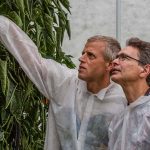
Finishing up leftovers – a model for zero-emission growing
Greenhouse horticulture will have to be virtually emission-free in ten years’ time. By 2027, European growers must ensure that their drainage water is completely

A smart watering strategy can reduce emissions to almost zero
The adage that every downside has an upside even applies to the regulations on discharges, which are becoming ever stricter. Full recirculation in sweet

First trial with dynamic light recipe in tomatoes ups production by 8%
There’s a lot of work going on into LED lighting at the moment. We already know from past research that light colour impacts on
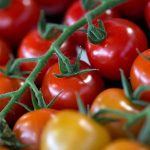
More greenhouse vegetables but fewer ornamental plants grown in the Netherlands
In the past five years, the Dutch greenhouse horticulture industry has shrunk by approximately 10% in terms of acreage. As opposed to just under

Controlling Echinothrips americanus with predatory mites and bugs
As every grower knows, thrips are a huge problem in ornamentals grown under glass. The usual suspect is the Californian thrips, a species with

Good cucumber yields in innovative Winterlight greenhouse
Last year the focus in the Dutch 2SaveEnergy greenhouse was on high-wire cucumbers. Over two production cycles, Wageningen University & Research investigated whether it

‘New approach to climate control whets the appetite for more’
Dutch growers who are directly involved in research into Next Generation Growing soon discover that they can apply small parts of it to their
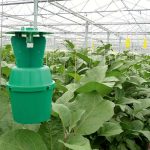
Luring effect of pheromone enhanced by adding plant aromatics
Plant bugs like the European tarnished plant bug and the common nettle bug are a serious problem in crops such as aubergine, cucumber and

Avoiding moisture shocks best remedy for preventing tip burn
Tip burn, or marginal necrosis, is a long-standing problem in tomato cultivation which occasionally rears its head in the new strategy of Next Generation
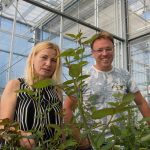
Feeding predatory mites pollen is useful weapon in battle against thrips
Controlling thrips in cut flowers biologically may be difficult but it’s not impossible. Supplementary feeding with pollen can help to build up and maintain

Shrinking supply of global phosphate forces critical look at its use
Phosphate fertilisation in soil-based cultivation is still often based on insights gained during the 1970s. More recent research indicates that you can use less

Trials show far-red light leads to large rise in tomato production
Far-red light enables a larger proportion of assimilates to reach the tomato. This is the conclusion of researchers at Wageningen University & Research who

Use of LEDs has potential to save energy and increase yield
Energy is a major expense for rose growers. At Arend Roses, in the Dutch Maasland, research is being carried out into the effect of
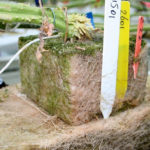
Only a systematic approach can limit excessive root growth
Virtually nothing can be done about excessive root growth. However, this troublesome bacterial disease doesn’t always get the chance to develop. Other microorganisms that

Potential for greenhouses to make sustainable leap in the tropics
Thanks to a united effort, an educational greenhouse project has been set up in the east African country of Rwanda. Its aim is to
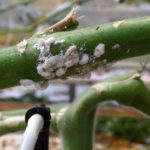
Difficult to control mealybug gains ground in vegetable production
Vegetable growers don’t like to admit that they have mealybug. A group of cooperating parties therefore sent a questionnaire to growers in 2015. From
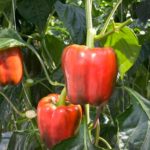
‘Energy screens play main role in new climate regime’
Energy efficient production according to the principles of Next Generation Growing, without any additional investment, is the aim of pepper trial being carried out

Winter light greenhouse at research centre ready for cucumber trial
The winter light greenhouse aims to enhance light transmission by more than 10% during the European winter. In September a trial greenhouse of 500

‘Open crop can bring forward production and save energy’
How much leaf does a tomato plant need to produce a good yield? That’s the main question behind a research project, The New Crop.

More homogenous climate requires different look at equipment and controls
You’d think that the climate in modern, well insulated greenhouses would be a lot more homogeneous than in days gone by. Nothing could be




